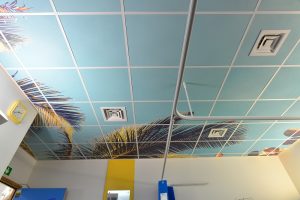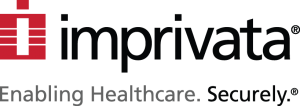|
|
Dartford and Gravesham NHS Trust to be self-made digital exemplar with UK-first Alcidion partnership.
New partnership between Dartford and Gravesham NHS Trust and Alcidion will help realise the trust’s ambition to be a self-made digital exemplar through industry-leading product suite and support.
Dartford and Gravesham NHS Trust is to enhance its digital maturity through a partnership that will see it implement a health technology platform to transform patient safety and clinical efficiency for its hospitals and its local healthcare system partners.
The trust, which serves a population of half a million people over three hospitals, has announced a five-year partnership with Alcidion, the parent company of well-regarded UK health technology provider Patientrack. The trust will deploy the technology provider’s full product suite as part of its mission to be a self-made digital exemplar, also supporting ambitions to embrace artificial intelligence. It is the first such installation of its kind outside Australia, where Alcidion is helping other healthcare providers pursue similar visions for digitally-enabled, paper-free healthcare.
The contract will see the trust deploy Alcidion’s Miya Precision platform, Smartpage healthcare messaging product, and Patientrack e-observation and early warning system in all wards across the trust.
Teams across the hospital will benefit, as will system-wide integrated care. Nursing staff will have more time to spend with patients, and the means to prompt more rapid interventions for deteriorating patients. Improvements to patient flow and discharge will help the whole trust cope with increasing demand, and the platform will provide healthcare system partners with access to appropriate data that will enable care closer to home.
Neil Perry, associate director of digital transformation at Dartford and Gravesham NHS Trust told GPSJ: “Following a competitive tender process, we are very pleased to be working with Alcidion to implement its leading product suite across our hospitals. Alcidion’s solutions are the right fit to help us meet our commitment to use digital technology to improve patient outcomes and share these improvements with other NHS trusts. Alcidion is a long term solution partner for the trust, and we believe its technology can empower our clinical staff to make informed decisions and focus on what they do best – deliver excellent patient care. We are very excited by the possibilities in the use of artificial intelligence and natural language processing offered by the Alcidion solution.”
Designed as a patient safety platform, the integrated technology deployment will support electronic patient observations, electronic paper charts, clinical assessments, clinical noting, patient flow, bed management and electronic discharge summaries for GPs. Clinical teams will have secure online access to patient information 24 hours a day, where and when required. Alcidion will provide simple, rapid access to data and digital processes for frontline staff, through a mobile platform that will support rapid escalation for deteriorating patients, reduce the burden of paper and help address its reliance on pagers – a national imperative for the NHS.
The partnership will help the trust to leapfrog the digital maturity of other trusts as part of its self-made digital exemplar programme, created by the trust in the spirit of the national Global Digital Exemplar programme being rolled out with digitally-advanced healthcare providers across the NHS. It will also help align the trust with technology visions of the NHS Long Term Plan and health secretary Matt Hancock, and ambitions of the review into digital health in the NHS undertaken by Dr Eric Topol.
The platform will harness data from multiple systems, and provide a single dashboard for events inside and outside the hospital. This will help to support an alliance with the trust’s partner Guy’s and St Thomas’ (GSTT) NHS Foundation Trust.
“We will have real time clinical information to share into the Alliance’s Shared Care Record for when we refer emergency or elective patients. This should strengthen the Alliance’s ability to keep patients nearer to home, with the GSTT specialists able to better advise and inform Dartford and Gravesham clinicians on the best course of action based on the real-time data insights. We hope this will see fewer emergency transfers and more patients cared for locally,” said Perry.
The new partnership has had strong clinical buy in from the outset, and nursing leads have been clear on the implications of the new platform. Phillipa Wakefield, Dartford’s lead nurse informatics officer, said: “We have seen the impressive results of Patientrack at other hospitals in helping to improve patient safety and clinical effectiveness. With the additional functionality of Alcidion, our nursing staff will have mobile technology that cuts the time they spend doing observations, escalations and assessments. It will also help us reduce unnecessary deterioration, through earlier interventions and improved alerting and communication”.
Other advances made possible with Alcidion include the ability to use Miya’s natural language processing (NLP) capability to take free text clinical narrative and code that into SNOMED.
“The NLP capability of the Miya platform is very impressive,” added Perry. “The digitalisation of doctors’ noting is uncommon across the NHS; with Alcidion, this technology is built-in and makes achieving this goal a real possibility from initial clerking through to discharge summaries. Our surgeons and anaesthetists are keen to explore developing the solution for pre-operative, inter-operative and post-operative surgery with tight coupling to our ePresccribing and Medicines Administration system. We are in early discussions on the need for anaesthetic monitors integrations.”
Alcidion’s UK General Manager, Donald Kennedy, said: “Dartford and Gravesham is incredibly impressive in its digital health ambitions, and will become an important reference site as one of the pioneers of using real-time data and mobile devices to improve patient safety. We look forward to supporting the trust on its digital health journey.”
Alcidion’s Managing Director, Kate Quirke, said: “This is a major win for Alcidion, and is the first integrated installation of the complete product platform – Miya Precision, Patientrack and Smartpage – outside of Australia. This contract is solid proof that we can introduce an innovative new technology solution to the UK market.”
 Bath Bath and North East Somerset Council (B&NES Council) is extending its Videalert CCTV enforcement platform with the installation of additional cameras for an approved class C clean air zone (CAZ) that is expected to commence operation at the end of2020. This scheme gives exemptions to private cars but charges higher polluting buses, coaches, HGVs, LGVs/vans, private hire vehicles and taxis.
Videalert was awarded the contract to ensure full and seamless integration with the council’s existing hosted digital video platform which is already being used to enforce a wide range of restrictions including bus lanes, bus gates and permit parking.
B&NES Council was one of 28 councils directed by the government to prepare an action plan to urgently reduce high levels of nitrogen dioxide (caused by vehicle emissions) to within EU and national limits by 2021 at the latest. The authority had originally proposed a Class D CAZ, charging all higher emission vehicles, including cars, to drive in the city centre. However, following further ongoing technical work and a public consultation in December – which garnered an unprecedented 8,421 responses – a class C option with additional traffic management, was agreed. 
According to Chris Major, group manager for Transport and Parking at B&NES Council: “The new charging class C CAZ will achieve compliance by 2021 apart from a single exceedance caused by localised traffic issues. We believe this will be resolved by installing traffic signals at two junctions.”
Videalert will be installing HD ANPR cameras to enforce the new CAZ scheme at key road junctions across the designated boundary. The hosted Videalert platform will automate the management and enforcement of this new zone, providing real-time identification including vehicle make, model, colour and euro standard rating for pre-filtering and updating the whitelist of compliant vehicles held at the edge to minimise transmission costs. Information on non-compliant vehicles will then interface with the UK government’s new national clean air zone database for vehicle validation and payment. The system will also provide detailed analytics and impact analysis highlighting the reduction in non-compliant vehicles entering the zone over time.
 Tim Daniels, Sales and Marketing Director at Videalert, added: “The award of this high profile contract confirms Videalert’s ability to handle the evolving requirements of clean air and low emission zones. It also demonstrates how a single video data platform can support multiple applications, enabling councils to address the challenges of improving traffic congestion and air quality simultaneously.” Tim Daniels, Sales and Marketing Director at Videalert, added: “The award of this high profile contract confirms Videalert’s ability to handle the evolving requirements of clean air and low emission zones. It also demonstrates how a single video data platform can support multiple applications, enabling councils to address the challenges of improving traffic congestion and air quality simultaneously.”
The daily charge will be £9 for non-compliant taxis, private hire vehicles and light goods vehicles (the minimum standard being euro 6 for diesel and Euro 4 for petrol), and £100 for buses, coaches and HGVs (the minimum standard being euro 6).
For further information please visit www.videalert.com
By Chris Berry, Managing Director, Liquid Voice (UK) Limited
Today’s customers have much greater expectations and organisations are increasingly having to demonstrate that industry regulations are being met and appropriate systems are in place to manage and protect the way in which their personal information is stored. Local authorities have had to find practical and rapid ways to achieve these standards in this new regulatory era, whether they hold credit card data within historical recordings or need ways of dealing with subject access requests and the ‘right to be forgotten’ under GDPR.
 Redaction Screenshot In addition to implementing systems that allow sensitive personal information to be stored safely, this new regulatory environment, which includes GDPR and PCI DSS, gives customers the right to decide how their sensitive information is handled. Local authorities now have a legal obligation to be able to identify, access, provide and, if requested, delete any recordings or other interactions that contain captured personal information within a one month period. This can be a major challenge when having to search through historical records with only limited useful metadata, unstructured storage and disparate systems
Data Consolidation
The challenge of managing data is magnified for local authorities needing to maintain legacy call recording equipment or manage risk for systems that have reached end of life and are no longer supported by manufacturers and their solution providers. Historical recordings can be easily and effectively migrated from systems, including NICE, Verint, ASC, Red Box, Xarios, Oak and many others to a new and fully supported platform without the loss of any data.
Automated Speech Transcription
Automated Speech Transcription is an effective solution to helps manage these large volumes of unstructured data. Having transcribed the spoken word, it allows organisations to search stored recordings for names and other useful personal identifiers which are not normally stored within recording systems and displays the results in seconds as text summaries ranked by relevance. These searches can include customer name, address or reference number where that data would not ordinarily exist.
As well as rapidly locating specific recordings, Liquid Voice data consolidation solutions allow them to be easily deleted as required within the right to be forgotten. This process is fully audited with the relevant security to permit or deny this privilege.
Redaction
The same technology can be used to automatically find and redact PCI or other toxic and sensitive information, whether held in stored recordings or other technologies including email, SMS, web chat and video. Data redaction has become a key element of the ongoing compliance strategies of local authorities that want to meet their regulatory obligations and is particularly important for historical data that may not have been captured under the most recent compliance environments.
Importantly, this enables compliance processes to be implemented without having to suppress or delete entire recordings. After rapidly locating all predetermined personal identifiers in recorded interactions and datafiles using Automated Speech Transcription, the Liquid Voice solution isolates and overwrites it whilst white noise is inserted over recorded audio files. If required, compliance teams can access all data with advanced security controls protecting it against unauthorised users.
Contact:
Email: sales@liquidvoice.co.uk
Tel: 0113 200 2020
Web: www.liquidvoice.com
….£250,000 per annum saved as a rolling desktop PC replacement programme isn’t required…
IGEL, a world leader in software-defined endpoint optimization and control solutions for the secure enterprise, today announced that Falkirk Council has implemented virtual desktop infrastructure (VDI) to provide workplace flexibility and mobility for over 2,000 staff and to enable it to assess and rationalize its whole office estate to make better use of its building assets.
In addition, VDI is allowing the Council to meet its Public Service Network (PSN)[1] compliance obligations and shift away from a continuous desktop replacement programme which was costing around £250,000 every year.
Located in central Scotland within half an hour of Glasgow and Edinburgh, Falkirk Council provides a diverse and wide range of services to over 160,000 residents including bin collection, education, home care, planning application services, social housing, fostering and adoption services and roads maintenance. The council serves the largest towns in the area such as Falkirk, Bo’ness, Denny, Larbert, Stenhousemuir and Grangemouth – Scotland’s premier port and home to its only major oil refinery.
Falkirk Council has deployed Citrix Workspace as its VDI, mobile device and application management solution, along with 600 IGEL multimedia UD3 and 100 powerful quad core UD6 endpoints in addition to 1,000 IGEL Universal Desktop Convertor (UDC) software licences. Supplied by I-KONIC, an IT solutions provider and IGEL partner based in Glasgow, this has put in place a flexible, easy-to-manage and cost-effective solution to support the future development of the organization.
Tommy Evans, Falkirk Council’s project lead for mobile and flexible working, explains, “Although it might sound cliché, moving from traditional PCs to thin client technology has genuinely been a paradigm shift for us. Along with mobile devices and iPads, staff aren’t now tied to a particular desk. They just login from any IGEL device and are presented with Microsoft Office and applications tailored to their specific job role. We’re trying to change the mindset of employees to make work an activity, not just somewhere you go from 9-5. We’re empowering our staff to work anytime anywhere, even from home so they benefit from a good work-life balance.”
This is a huge cultural change for the Council and is allowing it to introduce flexible and remote
working whilst ensuring availability of services to residents. Evans adds, “Even if there’s a snowstorm and people can’t get to an office, they can still login in and work as normal. VDI is also allowing us to review the buildings we currently have and exit old properties to lower our operational expenditure – helping towards making savings, which we hope will contribute to the approximately £60 million worth of savings which have to be made by 2023.”
Re-using existing IT infrastructure ‘sweats’ assets longer and saves precious budget
After a series of proof of concept tests with all well-known thin client vendors, IGEL was selected. This was for a variety of reasons:
- IGEL was the only supplier offering a software approach to managing desktops as opposed to just selling hardware. IGEL’s UDC software was particularly attractive as it has allowed Falkirk Council to turn its existing Windows-based HP PC desktops into IGEL Linux endpoints to not only facilitate easy management of them, but to extend the life of the actual hardware as well. Clearly this saves a huge amount of money given the hundreds of PCs involved.
- IGEL’s Universal Management Suite (UMS) means that the whole UD3, UD6 and UDC environment can be centrally managed with IT staff able to shadow desktops to offer fast helpdesk support.
- Compared to PCs, the IGEL UD3 and UD6 endpoints are quiet, produce less heat and are energy efficient. They come with an auto shut down feature too and turn off when not in use.
- Security has been maximized. The IGEL terminals are controlled by the UMS with the IGEL Linux OS ‘read only’. This means staff themselves cannot make changes to the endpoints locally or introduce security vulnerabilities as the desktop environment is ‘locked down.’
VDI simplifies desktop management across multiple locations
The use of Citrix Workspace means that the challenges and overhead of managing thousands of PCs across various buildings has been removed. Software updates are easily made as data and applications are all held centrally such that IT staff don’t have to traipse around machines updating things individually. Changes made in the datacenter automatically populate the connected IGEL desktops. This is key as PSN compliance requires councils to carefully manage the release dates of all key applications in use such as Microsoft Office and only be two versions behind the latest.
In addition, startup is now super-fast and takes seconds rather than minutes as was the case when PCs were used. Clearly this boosts staff productivity and avoids people wasting time as they wait for their desktops to ‘boot up.’
Furthermore, hardware maintenance has been drastically simplified as IGEL terminals have no moving parts such as hard drives and fans.
The Citrix Workspace solution is powered by HPE server infrastructure. The Citrix control layer is hosted on two HiveIO hyperconverged clusters for availability, each consisting of four HP ProLiant DL360 servers with the Citrix XenServer hypervisor. All virtual desktop workloads run from HPE Enterprise Moonshot System which is populated with 90 server cartridges across two chassis to deliver optimised performance. In total the council has invested around £1.8 million to completely transition away from PCs and put in place a much more modern, flexible and easy to manage desktop solution which – in the long term – is more cost effective.
Sean Russell, I-KONIC’s managing director, says, “As a Scottish-based IGEL partner and Citrix Gold Solution Advisor, it’s tremendously exciting to support Falkirk Council as they embrace virtual desktop and workspace technologies to boost efficiency and increase productivity. Our longstanding partnership with Falkirk Council, IGEL and Citrix goes from strength to strength with this transformation project. The never-ending rolling replacement of PCs has become a thing of the past, and users are able to access their applications and information from virtually anywhere.”
Moving forward, Falkirk Council is reviewing its office requirements. Evans concludes, “One thing that is particularly pleasing about the project is how the council has used technology to save money whilst giving staff tools to work more efficiently and effectively. We’re looking very carefully now at how we can release building assets through the use of Citrix and IGEL.”
Andrew Gee, IGEL’s VP Sales Northern Europe, says, “With all UK councils hit by budgets cuts, UDC is a smart way for them to save money and extend the life of any x86-based PC or laptop by converting them into an IGEL endpoint. It avoids perfectly good technology being thrown away. And it’s quick and simple to do with the device then easy to manage using our UMS software.”
For more information on IGEL, visit www.igel.com
[1] www.gov.uk/government/groups/public-services-network
 Reporter: Allan Roach Reporter: Allan Roach
The refurbishment of a ward at Bristol children’s hospital includes printed ceilings.
Hospital stays for children striving against cancer in the Bristol area are now more positive and stimulating, thanks to Armstrong Ceiling Solutions and its chosen charity Rays of Sunshine, a charity that brightens the lives of recovering children by granting their wishes and providing support in hospitals.
A refurbishment of the oncology day beds unit at Bristol Royal Hospital for Children, part of the University Hospitals Bristol NHS Foundation Trust, includes acoustic ceilings featuring sky scenes and shoals of fish to reflect its new name as the Ocean Unit.
The ceiling systems donated by Armstrong, totalling almost 300m2, were installed for free as a part of a ward wish by specialist sub-contractor H + L ceilings- a member of Armstrong’s approved national network of Omega contractors.
The BioGuard ceiling tiles that feature anti-bacterial benefits for healthcare environments were finished with a coating of sky scenes in the recovery bay for older children, a school of fish swimming down a river in the reception/waiting area corridor, and a shoal of fish in a small treatment room.
They were installed by a team of three from H + L over two weekends, with the old tiles from the 10-bed ward being sent to Armstrong’s factory in Gateshead for recycling and the company’s streamlined TLS grid, which is up to 20% faster to install, replacing the existing suspension system.
Around 35% of the total tiles were white and screen-printed which Armstrong supplied with a number on the back so H+L could follow appropriate layout guidelines.
Armstrong became involved in the project after its chosen charity Rays of Sunshine identified the refurbishment of the ward, which had not been updated for 15 years, under its Hospital Ward Wish programme.
This works to, among other elements, decorate treatment rooms to transform sterile spaces into stimulating environments which provide a distraction and enable children to respond better to treatment.
The refurbishment of the Ocean Unit, which has two six-bed bays and four single rooms as well as four consulting rooms, and looks after all oncology, haematology and bone marrow transplant children up to 19 years, also included new wall art and furniture.
H+L director Darren Hopkins told GPSJ: “When Armstrong asked us to install the project we were more than happy to get involved. It was treated like any other job but the installation team volunteered themselves for the weekend work.”
And of the tile numbering system he added: “We have never had to work that way before but it was pretty easy to install by following the instructions Armstrong gave us.”
 Jane Sharpe, CEO of Rays of Sunshine, said: “A very big thank you to everyone involved in making this happen. The ceiling makeover will make such a massive difference to the children visiting the ward for treatment. It will make their time there so much more bearable and will put lots of smiles on lots of faces.” Jane Sharpe, CEO of Rays of Sunshine, said: “A very big thank you to everyone involved in making this happen. The ceiling makeover will make such a massive difference to the children visiting the ward for treatment. It will make their time there so much more bearable and will put lots of smiles on lots of faces.”
Jane Thomas, donations co-ordinator for the children’s services division of University Hospitals Bristol, thanked Armstrong for their support in “transforming” the ceilings for the patients and their families.
She said: “The work completed by Armstrong Ceilings has made the area a brighter but still calm place for the children to be in, with the fish gently swimming through. Especially popular is the large bay under the tropical picture where the children can recover following treatment.”
Isabel Blanco, Armstrong’s marketing communications manager, said: “Our latest exercise for Rays of Sunshine was particularly rewarding as it was easy to see the difference the bright, fun ceilings made to the children.”
BioGuard tiles are cleanable and perform to Sound Absorption Class C and Clean Room Classification ISO 5. They are also 85% light reflecting and 95% humidity resistant and manufactured from 42% recycled content.
More information is accessible via the Armstrong Ceilings website www.armstrongceilings.com/commercial/en-gb/.
 Reesink customer service Reesink Turfcare, the UK distributor for top turfcare brands including Toro, TYM Tractors and Otterbine lake and pond aeration, has invested in six new service vehicles for its mobile technicians.
With the up-to-date and extended fleet, Reesink is now more equipped than ever to provide customers with an effective and dependable service, says Reesink’s operations manager David Jackman.
“By investing in this new fleet of vans, we have more reliable and efficient equipment, which means we can provide an improved service to our customers,” says David. “We take maintenance of our products seriously and this fleet of vans is essential to deliver back up if and when it’s needed. We pride ourselves on providing excellence and that doesn’t just begin and end with the sale of the product.”
Three of the vans will be at Reesink’s Sheffield Park service branch in East Sussex, one at the branch in Livingston, Scotland and two at the East Anglian service branch based at the company’s headquarters in St Neots.
David continued: “We have a particular focus on customer service, ensuring it expands in line with the company’s growth and we want to build on our relationship with our customers within our direct areas. This investment is the next step in strengthening that relationship.”
The six vans all come fully racked which includes a work bench and shelving kit solution, and can easily transport all the tools and parts needed for on-site service visits and breakdowns.
David concludes: “We’re completely committed to delivering exceptional service and these vehicles guarantee we have the right equipment for the job. We’re looking forward to seeing the new fleet in action and supporting our customers.”
The acquisition supports BearingPoint’s overall growth objectives, increases its critical mass in the UK, and broadens its public service capabilities.
Management and technology consultancy BearingPoint made a strategic move by acquiring Prederi, a leading consultancy focused on public services in the UK. The acquisition supports BearingPoint’s overall growth objectives, strengthens its presence in the UK, and broadens its public service capabilities. With this transaction, two highly profitable companies join forces. Prederi provides expert advice and consultancy and serves a large number of prestigious UK public sector clients. For many years, Prederi has been generating stable revenue streams. The Prederi team now expands BearingPoint’s expertise and capabilities in one of the largest and most competitive public services markets in Europe.
“With the acquisition of Prederi we are continuing our growth strategy in selected markets with consultancies that are highly focused and strongly differentiated,” said Kiumars Hamidian, Managing Partner of BearingPoint. “Prederi’s portfolio is a perfect complement to our public service strategy and supports our strategic growth areas.”
“Joining forces with Prederi is an important step as we continue to broaden our capability footprint in the UK. Prederi has a strong strategic, operational and cultural fit with our existing UK business. It is another highly focused acquisition that offers an excellent addition to our portfolio,” added James Rodger, Regional Leader UK and Ireland for BearingPoint.
Stewart Johns, Managing Director of Prederi, commented: “We are delighted that Prederi is joining up with BearingPoint. Our passion has always been to provide a high quality and value for money consulting and training service to UK Central and Local Government and the NHS. Being with BearingPoint will enable us to accelerate our growth sustainably and to enhance and extend what we can do for our clients in today’s challenging climate. We look forward to working with new colleagues in the UK and Ireland and across Europe to share know-how and develop new solutions for the benefit of the full BearingPoint client base. Most of all, we are excited at the development opportunities that will open up for the Prederi team and those who will join us in the future.”
For more information, please visit:
Homepage: www.bearingpoint.com
Annual Report: www.bearingpoint.com/en/about-us/annual-report/
LinkedIn: www.linkedin.com/company/bearingpoint
Twitter: @BearingPoint
 Miriam Mendes, Programme Manager of ITRC, By Miriam Mendes, Programme Manager of ITRC, based at The Environmental Change Institute, University of Oxford.
A new tool from the United Nations Office for Project Services (UNOPS) and University of Oxford-led Infrastructure Transitions Research Consortium (ITRC) has been launched to ensure that infrastructure is developed to support achievement of the UN’s Sustainable Development Goals (SDGs).
The SDGs were adopted in 2015 and agreed by 193 countries from developing and emerging nations to developed countries. They were designed to create a better and more sustainable future for people worldwide.
A recent study published in the prestigious journal Nature Sustainability has found that fulfilment of the majority of SDG targets will depend on infrastructure systems.
Sustainable infrastructure is better-designed and will save money in the long-term, explains co-author and Professor of Climate and Environmental Risks at the University of Oxford, Jim Hall: “Global spend on infrastructure investment is set to reach $97 trillion by 2040[i] but this money could be spent more wisely, creating infrastructure that works with nature to serve the needs of the people, keeping us on track to bring carbon emission to zero, and that is designed to be resilient to climatic extremes and other shocks.”
The new tool, SustainABLE, has been to designed to harness this fundamental research – providing development practitioners with real-world practical actions to ensure that their infrastructure project supports achievement of the different targets of the SDGs.
Scott Thacker, Senior Analyst at the United Nations Office for Project Services (UNOPS), explains, “We’ve created SustainABLE as an easy to follow online tool available to anyone who wants to ensure the SDGs are at the heart of their infrastructure projects. This is the first time that the SDGs have been captured in this way, providing a very clear walkthrough and step-by-step guide to understand the influence of infrastructure on each target and provide tangible actions for ensuring that influence is realised.”
SustainABLE demonstrates how infrastructure systems from energy to water, waste, transport, digital communications, education, healthcare and other social infrastructure can help to ensure progress is made towards the Sustainable Development Goals.
Jim Hall comments, “Infrastructure investment is at an all-time high globally. An ever-increasing number of decisions are being made now that will lock-in patterns of development for future generations. It’s critical that policy makers establish long term visions for sustainable national infrastructure systems, informed by the SDGs, and develop adaptable plans that can demonstrably deliver their vision. The new SustainABLE tool will be a central plank in establishing how infrastructure can help satisfy the SDGs.”
Scott Thacker of UNOPS adds, “With $2.3 trillion[ii] being spent per year on global capital infrastructure investment, funding is at an all time high. However, in some areas of the world there is still a lack of the most basic infrastructure, infrastructure that’s designed to satisfy future population growth, or to protect society from the harmful impacts of climate change.”
SustainABLE’s first module is now available for users to map the gender-related SDG targets of women’s empowerment and infrastructure against areas including energy, transport, water, solid waste, ICT, health, education, government and housing. Specific subsectors can also be targeted such as air transport, surface water management, or emergency response.
Modules scheduled to be launched include risk and reliance, climate mitigation, environmental protection, with others in development.
SustainABLE will help infrastructure decision-makers from international development bodies, development banks and governments to embed sustainability in infrastructure projects in developing and emerging nations and first world economies to make better use of their budget.
Jim Hall adds, “Built well, infrastructure can demonstrably and positively contribute to areas from economic prosperity and employment to health and education and the safeguarding of the planet’s natural resources. However, costly infrastructure is not always planned properly for the long-term, in consideration of the impact of one infrastructure on another, to take into account vulnerability to natural or manmade hazards, or in line with the UN’s Sustainable Development Goals (SDGs) adopted by 193 countries in 2015.”
The paper published in Nature Sustainability focuses on the interplay between the physical and societal aspects of infrastructure systems, such as how long-lived assets shape future patterns of behaviour and development.
It classifies direct and indirect influences of infrastructure services on SDG goals and target outcomes. It also identifies functions where the infrastructure provides a unique contribution to the SDG target, and those where a pair or more than one infrastructure provides a shared contribution to the SDG target.
The new SustainABLE tool and the paper published in Nature Sustainability will be of interest to policy makers in government, investment banks, NGOs, developers involved in infrastructure projects, as well as researchers and academics.
Website: www.itrc.org.uk www.unops.org
Try SustainABLE for yourself: sustainable.unops.org/
[i] Global Infrastructure Outlook forecast estimates as at April 5 2019 outlook.gihub.org/
[ii] [CD: add reference 17 from paper]
- Coeus Software joins as a supplier on the latest DAS Framework by the Crown Commercial Service
- DAS provides a direct route for emergency services, health and other public sector customers to procure cloud software, hardware and professional services all in one procurement
- Coeus Software listed in lots 1b (Workflow & Case Management Solutions) and 4a (Bluelight Operations)
Coeus Software the leading provider of cloud-based, mobile workforce solutions for the public and private sectors, has successfully launched on the new Data & Application Solutions (DAS) Framework.
The DAS framework was launched by the Crown Commercial Service (CCS) on 22nd February 2019. It allows public sector organisations to buy, implement, test and deliver a broad range of software solutions, as well as essential hardware and professional services, in one simple procurement.
The DAS framework is split into five lots covering the following areas:
- Enterprise applications
- Local government
- Health and social care
- Police and emergency services
- Education
The following mobile working solutions by Coeus Software are listed on the following two lots:
- Lot 1b – Workflow & Case Management Solutions: Quvo®, a mobile working platform for compliance-based private and public organisations. Quvo takes the same industry-leading security, customisability and integration capabilities of PoliceBox, but broadens its capabilities for those in the wider Public Sector, Corporate and SME marketplace who operate in heavily regulated or compliance-based environments. Quvo is appropriate for any organisation with high compliance-based needs e.g. Councils, housing departments/associations, social services, healthcare etc.
- Lot 4a – Blue light operations: PoliceBox®, the UK’s only secure and fully customisable mobile working platform for the Police. PoliceBox helps officers deliver truly modern, 21st century digital policing, with much broader functionality and at a fraction of the cost of the more established rival platforms. Forces that use PoliceBox can quickly modernise their business processes to achieve genuinely cloud-first, mobile-first policing for the first time. PoliceBox provides a way for officers to access all the data they need in real-time, in the palm of their hand. In particular this means providing mobile access to the Police National Database (PND) and any other regional/national data services that they need. This is not just read only access. With PoliceBox they can also input data to these databases in real-time.
According to Ben Paynter, Crown Commercial Services Category Director – Digital Future, “This is the first framework by CCS that gives customers the choice to buy cloud and on-premise software or a combination of both under one agreement. It also allows customers to buy software alongside necessary hardware and professional services, in one procurement.”
 Simon Hall “Data and Application Solutions builds on the legacy of the Local Authority Software Applications and Corporate Software Solutions agreements, whilst also allowing the Crown Commercial Service to serve new customers in Health, Blue Light and Education. The agreement has been designed following extensive engagement with both customers and suppliers.”
Simon Hall, CEO, Coeus Software, comments “We are delighted to join the DAS framework, as it will provide a more seamless route for the police and other public sector organisations to take advantage of our innovative mobile working platforms so they can quickly and easily mobilise their business processes.”
In addition to the DAS framework, PoliceBox and Quvo remain available on the G Cloud marketplace and directly from www.policebox365.com.
Coeus Software Ltd. develops cloud-based, mobile workforce services for the police, health, social care and wider public and private sectors. Their services have been specifically designed around the day-to-day needs of its customers. From frontline police officers to nurses and social workers, its products support and enhance the way its customers already like to work. This ensures they fit seamlessly into their work day to deliver tangible benefits from day one.
Reporter: Stuart Littleford
Investment in online technology is enabling a local authority-training provider to enhance their quality improvement approach and be prepared for Ofsted.
Gateshead Council Learning & Skills, which provides community learning, apprenticeship and JobCentre Plus training, as well as family learning support and Skills 4 Life, helps more than 11,000 people a year to secure new job skills and achieve nationally recognised qualifications.
The organisation uses Mesma’s insightQ subscription-based software to improve self-assessment and quality improvement planning; assuring progress across its operation, centralising co-ordination of actions and reporting and monitoring these more effectively as part of its quality strategy.
 Gateshead Training & Skills This includes oversight of key activities concerning quality of teaching, learning and assessment, safeguarding, CPD, communications planning, observation processes, accessibility and subcontractor quality arrangements.
The training provider’s systems are in line with the Ofsted’s Inspection Framework, specifically around monitoring the impact of quality improvement activities to ensure that they have a beneficial impact on learners.
Sonya Anderson, senior adult learning and skills manager sees the ‘Evaluate’ and ‘Improve’ modules of insightQ, which she and her colleagues, who include the principal, learning skills manager, curriculum managers and those with responsibility for business development, data and funding and safeguarding, use as ‘extremely valuable tools’.
She recalls 2016, when Ofsted recognised during its inspection of Gateshead Council Learning & Skills’ activities the value of insightQ as providing a real-time and cost-effective management resource – one actively improving their approach to quality management.
She said: “We could show to Ofsted that our ‘Good’ status is supported through having the appropriate information readily to hand during inspection. We put this down to the value of having an effective self-assessment and improvement planning resource – insightQ – available, showing the evidence of a quality oversight throughout our journey.
“The technology, which has been integrated across our administrative and management processes over several years, is now very much part and parcel of our oversight and managerial operations. It centralises control of important information, allowing us to track priorities and record progress, so much easier than any other systems I have used.
“My colleagues also like using insightQ. It keeps them up-to-date about important actions as they track and record their own progress against agreed actions, again helping to improve overall quality levels and boost efficiency.”
 Mesma’s insightQ is a versatile, collaborative and cost-effective online resource, which enables important areas of the self-assessment process and associated improvement plan activities to be allocated to authorised people within any training environment. Its key purpose is to drive quality improvement in educational provision for learners. Mesma’s insightQ is a versatile, collaborative and cost-effective online resource, which enables important areas of the self-assessment process and associated improvement plan activities to be allocated to authorised people within any training environment. Its key purpose is to drive quality improvement in educational provision for learners.
Sonya Anderson says the technology’s pivotal in evidencing improvements in data capture, background processes and demonstrable staff engagements and actions: “The system is undoubtedly a huge improvement over paper-based ones, adding value to our operations and considerably assisting in addressing and raising quality standards.
“The team benefit from shared ownership of the system, seeing the critical information about achievement and improvement across the entire operation. This makes for more informed decisions as we move forward to embrace a changing training landscape.”
As she looks to the future she is currently integrating the new Observe module to allow her colleagues to schedule and capture centrally the outcomes of on-going learning observations.
She adds that the technology will play a strong role in helping the team prepare to deliver the new apprenticeship standards to all learners in both levy and non-levy paying employers.
“As a training and skills provider, we are adapting to comply with changes, and new tools like the Observe module, will help us prepare for the new Ofsted inspection landscape which will be coming into effect from this September,” says Sonya Anderson.
“For instance, we will see more rapid and effective reporting and feedback, helping us to quickly identify trends and direct resources to where they are most required, as the module goes live.”
Mesma’s insightQ is proving to be a shrewd investment for Gateshead Council Learning & Skills. Easy-to-use and well supported, it’s driving through improvements in quality while transforming the measurement of progress into a more manageable, visible daily process.
insightQ users are already using the platform to make the switch in self-assessment reporting to the new Ofsted Education Inspection Framework. More at www.mesma.co.uk
 Sascha Giese, Head Geek™, SolarWinds By: Sascha Giese, Head Geek, SolarWinds
A new study by SolarWinds suggests that U.K. public sector technology professionals are at an inflection point in their careers. They have one foot grounded in today’s IT-focused realities, while also setting their sights on technology that’s to come—often with some trepidation about their ability to manage it when it does arrive. SolarWinds’ IT Trends Report 2019[1] uncovers an ambitious and career-focused drive amongst the U.K.’s public sector tech pros. It suggests they have a growing desire to utilise their technology expertise and focus on their career-based learning in order to play a bigger, more influential role in their organisation’s innovation and strategy. With an understanding of the skillset and career development landscape, it’s important to note that not only is more training in these emerging areas needed—it’s desired.
Training priorities
It’s clear that tech pros have an appetite to prioritise career development on a weekly basis. When it comes to their primary sources for training, tech pros turn to industry events/trade shows (21%), vendor training sessions (20%), internal training and/or coworkers (13%), industry publications (13%) and online communities/forums (13%). However, each of these options are regularly hindered by factors like time and cost. Over a quarter say their day-to-day IT tasks extend into time earmarked for career development. This is concerning, considering tech pros tell us that they enjoy technology skills training, with 49% finding it informative, 44% saying it’s engaging and interactive, and 20% reporting it’s not long enough.
Given the time and resources pressure on training, in the year ahead tech pros should think about approaching skills development strategically and prioritise necessary learning based on the needs of daily operations and IT environments, as well as skills that translate to career growth. They should evaluate their current environments; for example, asking themselves which leading technologies from last year have actually made their way into today’s IT environment. The trajectory from emerging, buzzword-laden technology and its real-world implementation should act as a guide for which technologies are best suited for the focus of training.
When the time comes to implement new technology to create efficiencies, there’s a steep learning curve that creates double the work. To combat this, tech pros should ask management to define the core competencies of the business as they relate to technology, and then monitor for gaps between importance and training. Is the organisation buying new technology purely for testing and experimentation or will it be business-critical? When there’s a gap between core competencies and skills in IT management, it becomes much easier to have a conversation about necessary training.
Charting a career development path
It’s possible that some of the country’s public sector technical professionals may feel as though their current IT environment doesn’t justify an investment in new skillsets. But tech pros on the fence about training should consider this: the less proactive the IT environment, the more proactive tech pros should be when it comes to personal development. To truly capitalise on the opportunities presented by emerging technologies—and to ultimately remain successful five years from now—tech pros must commit to the mindset of a lifelong learner by taking a more disciplined, proactive approach to skills and career development.
The most effective way to achieve this is to start small and set aside manageable, realistic amounts of time to invest in personal development. Learning can happen in short bursts of just five minutes; and five minutes twice a day adds up fast. By investing in learning as a lifestyle, common challenges such as finding time to sit down and complete a training module become easier to overcome.
Learning the language of business
As technology becomes increasingly inseparable from business success, the IT department is more important than ever. There’s often a misperception amongst tech pros that more work can be accomplished on a command line rather than in PowerPoint, but the opposite is actually true: tech pros who can learn the language of business (and it is a language) will be able to successfully influence technology decisions and enhance their resumes.
The ability to translate the technological impact of a decision to business objectives will positively influence future innovation and decision-making. IT often gets asked to provide training, but they might need the training to provide training upfront. Tech pros should look for someone who can help teach them how to translate traditional IT jargon, whether it’s a technologist who has experience in business, or a business manager who can share insights and recommendations.
This year’s survey builds on the results of the SolarWinds IT Trends Report 2018: The Intersection of Hype and Performance, which revealed tech professionals’ struggle to overcome the barrier of inadequate training, and echoing the convergence of IT roles from several years ago (de-siloing roles like SysAdmins, NetAdmins, DBAs, etc.). This year’s survey continues to suggest that the lines between managed services—either by cloud providers or outsourced—and tools that were formerly considered cloud, DevOps, and traditional IT tools, respectively, are becoming increasingly blurred.
As a result, it’s more important than ever for tech pros to embrace collaboration and feel empowered to work with other teams as needed. This holds true when it comes to knowledge sharing as well. A portion of tech pros around the world prefer to receive training primarily from colleagues, and so it’s important to remember that knowledge gained could and should be knowledge shared with peers for the greater good.
[1] The statistics quoted in this article are taken from SolarWinds’ UK Tech Pro Survey, A Look at the IT Upskilling Needs of Tech Pros Today that Will Help Transition Them into the Tech Pros of Tomorrow. The survey was conducted in December 2018 by C White Consulting. It yielded responses from 61 technology practitioners, managers, and directors in the United Kingdom from public sector small, mid-size, and enterprise companies.
 Joe Strafford A leading building surveyor has been promoted to head the building control team at Telford-based consultancy apT just weeks after gaining a prestigious new qualification.
Joe Strafford has been appointed to lead the seven-strong building control team at apT, the Midlands’ first public sector commercial planning, development and environmental consultancy.
Joe’s promotion comes just two months after he became the first surveyor in the county to be independently accredited by Local Authority Building Control (LABC) and the Institution of Fire Engineers (IFE) to offer advice on fire regulations for complex buildings over 18 metres high.
Joe passed a five-hour exam introduced in the aftermath of the Grenfell Tower tragedy to become an associate member of the IFE. It means he can now advise on fire safety in tall and complex buildings anywhere in England and Wales and joins a select group of specialists with the qualification.
“I am delighted by the promotion and the chance to lead such a strong building control team at apT,” said 36-year-old Joe.
“This is a really exciting time for apT. There is a huge amount of work going on around Telford as the town continues to develop in a really exciting way and we also now have the opportunity to use our expertise further afield on a consultancy basis.
“There are plenty of opportunities for the team at apT – and some challenges as well – but we know that we have the expertise and experience here to meet all of them.
“And the fact that my promotion comes so soon after gaining the IFE qualification is the icing on the cake.
“The qualification shows that we have the knowledge and know-how within apT to deal with building issues of the most complex nature to ensure that our clients achieve compliance with all regulations.
“It is an independent recognition that we have the experience, depth and breadth of knowledge to deal with any project and also an indication that Local Authority Building Control teams can often offer a much more comprehensive service than private sector competitors.”
apT, which is part of Telford & Wrekin Council, specialises in professional help and guidance for planning, highway design and building regulations.
For further information on apT Group please visit www.apt-group.co.uk/ or follow @apTgroupuk on Twitter.
To contact telephone 01952 384555 or email contact@apt-group.co.uk
Reporter: Selena Darke
NHS Foundation Trust will retain its PAS and use the ‘clinical wrap’ approach to deploy Allscripts Sunrise™, with an ambition to achieve HIMSS EMRAM level seven within five-years.
Gloucestershire Hospitals NHS Foundation Trust is moving to a ‘clinical wrap’ strategy to deliver an electronic patient record (EPR) and achieve the highest levels of digital maturity within five-years.
The trust, which delivers a wide range of hospital services from Gloucestershire Royal Hospital, Cheltenham General Hospital and Stroud Maternity Hospital, will implement Allscripts Sunrise Acute Care integrating with the existing patient administration system.
Mark Hutchinson, the trust’s chief digital and information officer, told GPSJ the approach would enable it to work collaboratively with its suppliers to deliver new, digital services for clinicians and patients: starting with nursing documentation, paperless outpatients, order communications and e-prescribing.
The trust’s ambition is to reach level six on the HIMSS EMRAM digital maturity model within two-years, and level seven within five-years. “In doing that, we have the intent to make a really significant improvement in terms of releasing time to care,” Hutchinson said.
“For clinicians, that will mean less time with a pen and paper in their hands, and more time working with information at their fingertips. And for patients, that will mean an improvement in the quality of the care that they receive. This is not an IT project: it is a reliability of care and safety project.”
Allscripts Sunrise Acute Care is an integrated EPR that can be deployed as a series of highly configurable modules to meet trusts’ needs.
It is already in use at high-profile NHS organisations, including Salford Royal NHS Foundation Trust, a global digital exemplar, and Wrightington, Wigan and Leigh NHS Foundation Trust, which is leading development of the clinical wrap approach.
Hutchinson said the system’s UK reference sites along with its flexibility and configurability had been key to his trust’s decision to deploy the system. “When this trust started its digital journey, the promise was that it would have an EPR,” he said.
“Deploying Sunrise Acute Care will deliver on that promise, because the Allscripts clinical wrap approach allows you to get straight into improving the safety and quality of care, by improving processes and removing cumbersome, potentially unsafe paper.”
Another factor in the decision was Allscripts’ open architecture and the ease with which Sunrise can interoperate with other systems.
This will enable the Gloucestershire Hospitals to feed information into Gloucestershire’s JUYI (Joining Up Your Information) portal, and to give clinicians secure access to the information it holds via a tab in the EPR; in line with the national imperative to develop IT to support joined-up, integrated care.
“We believe Sunrise is the right EPR to support the trust to deliver agile digital maturity and to deliver outstanding staff and patient experience,” said Deborah Lee, chief executive of Gloucestershire Hospitals NHS Foundation Trust.
“Along with improvements in patient outcomes and operational performance, we’re confident that our investment in the Allscripts solution, alongside our existing partnership with InterSystems who supply the Trust’s Patient Administration System, will rapidly improve the trust’s digital maturity and support our strategic ambitions”
Allscripts offers a patient administration system, the Sunrise EPR, and the dbMotion shared care record/population health management system to the UK, where nine trusts are using or deploying the EPR.
Richard Strong, Allscripts UK managing director, said: “Implementing EPRs that are open and interoperable is critical to efficient sharing of information between Gloucestershire’s main hospitals.
“Gloucestershire Hospitals NHS Foundation Trust’s decision to select the Sunrise solution will position the trust to communicate effectively, improve health outcomes and drive efficiencies.”
Reporter: Stuart Littleford
Nearly a Fifth of U.K. Public Sector Organisations Reported Over 1,000 Cyberattacks in 2018, Despite Over 95 Percent of Respondents Using Firewalls, Antivirus, and Malware Protection.
- Freedom of Information request conducted by SolarWinds examines cyberattack preparedness among NHS, central government, and defence public sector organisations
- Over a third (38 percent) of respondents experienced no cyberattacks in 2018, with the mean reported annual budget for cybersecurity being over £350,000
- Prominent obstacles in maintaining and improving cybersecurity centred on competing priorities, budget constraints, and a lack of manpower
SolarWinds (NYSE:SWI), a leading provider of powerful and affordable IT management software, today released the findings of its latest Freedom of Information (FOI) request investigating cybersecurity challenges and preparations in U.K. public sector organisations. While over a third (38 percent) of respondents claimed to have experienced no cyberattacks in 2018, compared to 30 percent who said the same for 2017, there was also an increase in the number of organisations reporting in excess of 1,000 cyberattacks. Eighteen percent of respondents said this was the case in 2018, up from 14 percent in 2017, despite the Minimum Cyber Security Standard being published in June 2018, a guideline that 98 percent of respondents were aware of.
 Sascha Giese, Head Geek™, SolarWinds Among respondents who shared the types of attacks their organisation had experienced, the most common were phishing (95 percent) and malware (86 percent), with a large step down to third place, ransomware (54 percent). Malicious targeted attacks either from an insider or from a foreign government were the least common type of attack experienced, with just three percent of respondents affected. This may explain why the most common defences in place were firewalls (98 percent), antivirus software (98 percent), and malware protection (96 percent). However, other critical parts of cybersecurity infrastructure were less pervasive. Under three-quarters of respondents used log management (73 percent) or network traffic analysis (74 percent), both tools which can be useful for monitoring unexpected activity that could be a sign of a cybersecurity weakness.
“While preparation is generally high throughout the public sector, the growth in large numbers of attacks shows that there is still significant risk,” said Sascha Giese, Head Geek™, SolarWinds. “These results highlight the importance of finding simple-to-use, affordable, and scalable security solutions that can work across the varied IT environments like those in the NHS and central government, to ensure the most comprehensive protection available for these vital services.”
Finally, when asked what the biggest roadblocks to maintaining and improving cybersecurity were, the most-cited issues were competing priorities (71 percent), budget constraints (67 percent), and a lack of manpower (59 percent).
In total, 28 central government organisations, 164 NHS trusts and Clinical Commissioning Groups (CCGs), and the MOD responded to the Freedom of Information request. All percentages are based on the number of respondents per question who provided input, rather than the whole sample, as some organisations did not provide answers for every question.
Key Findings
While cyberattacks became less widespread in 2018, more organisations experienced over 1,000 attacks than in the previous year.
- While the overall percentage of public sector respondents who experienced a cyberattack in 2018 compared to 2017 went down (38 percent experienced no cyberattacks in 2018, while 30 percent experienced none in 2017), there were also more organisations that experienced over 1,000 cyberattacks—18 percent in 2018 compared to 14 percent in 2017.
- Most healthcare organisations (74 percent) who provided an answer to how many cyberattacks they experienced in 2017 and 2018 experienced less than 50 cyberattacks in 2018, slightly less than experienced less than 50 in 2017 (75 percent)—this seems somewhat at odds with the fact that the WannaCry outbreak was in 2017, which cost £92m and caused 19,000 appointments to be cancelled, but suggests that the attack may have been a one-off for many.
- 83 percent of government organisations who responded on the subject of cyberattacks in 2018 had experienced in excess of 1,000 attacks in the year. This was up from 67 percent in 2017.
The majority of attacks experienced echoed consumer trends focused on phishing and malware, and protection predominantly consisted of firewalls, antivirus, and malware protection.
- Attacks were predominantly phishing or malware—95 percent of organisations that shared the types of attack they had experienced cited phishing, and 86 percent had experienced malware.
- The least common types of detected attacks or threats according to respondents were from malicious insider threats (three percent) or foreign governments (three percent).
- In terms of defences, firewalls (98 percent), antivirus (98 percent), and malware protection (96 percent) were the three most common solutions deployed. 94 percent also had patch management.
- The least common tools were log management (73 percent) and network traffic analysis (74 percent).
- Nine percent of organisations had not invested in employee training for the whole organisation around cybersecurity, and 15 percent had not invested in additional employee training for the IT team.
- Where respondents knew how much was allocated to cybersecurity defence budgets, most public sector organisations allocated between £100,001 – £500,000 for their cybersecurity budget, with the mean spend being over £350,000.
Limiting factors for cybersecurity maintenance and improvement were centred around resources and meeting competing priorities.
- The main challenge experienced by public sector organisations was competing priorities (71 percent), followed by budget constraints (67 percent). Lack of manpower was third at 59 percent, followed by complexity of the internal environment at 48 percent.
- Budget concerns were more of a problem for healthcare organisations than for central government—68 percent of NHS trusts and CCGs reported budget constraints as an issue, compared to 50 percent of central government respondents.
Resources
 The Second World War Chief of MI6 said Alexander Wilson had ‘remarkable gifts as a writer of fiction, and no sense of responsibility in using them!’ Wilson’s three year career in the Secret Intelligence Service ended when the country’s spy chiefs decided his creativity got the better of his grasp of reality. His ‘secret lives’ extended to his private life. Four wives and four families; not necessarily one after the other. In this second Edition Tim Crook unravels more of the mysteries of this extraordinary story. The first edition of his biography is the foundation of the BBC drama series ‘Mrs Wilson’ produced by and starring his award-winning granddaughter Ruth Wilson. It is eight years since Tim first told the story of the life and times of the father of his friend Mike Shannon. In the spring of 1941 Mike was only 7 years old when he said goodbye to his father, Alexander Wilson, dressed as a lieutenant colonel in the Indian Army. As the steam train pulled away from the Yorkshire railway station platform that would be the last time he ever saw him. More than six decades later Tim Crook would help unlock the secrets of his father’s life. The biography was published in October 2010 shortly before Mike passed away. Not only had he learned that his father had worked for MI6 during the Second World War, but that he had been one of the leading spy, crime and romance authors of the 1920s and 30s. At first he seemed to be a man with no beginning and no end. There was no record of his death in action in the North African desert, and there was no record of his birth in the identity his father had put on his son’s birth certificate. Mike would have to come to terms with the fact that his father had faked his own death, had lived double, triple and quadruple lives. He would be revealed as a multiple bigamist, but at the same time also a celebrated and successful author. Details of crimes and imprisonment would be mixed with the discovery of relatives and a new family he had no idea existed. The second edition includes more revelations about Wilson’s work in MI6, where his talent for invention is said to have done more harm than good, his role as a university chief in British India where he enjoyed great success despite getting the job with a fake CV, and more spy novels under a pseudonym that indicates that he must have loved the son he abandoned. Fabulist and multiple bigamist, or patriotic author whose imagination blurred the lines between truth and fantasy? The new edition gives focus to the four remarkable women in his life. Wilson created a chief of a fictional British Secret Service, Sir Leonard Wallace, who appears substantially based on the first real ‘C’ of MI6, Captain Mansfield Smith-Cumming. The story involves the Secret Intelligence Service, MI6, the Security Service, MI5, and two World Wars. It is a story of love, betrayal, broken hearts, terrorism, patriotism, and a triumph of human dignity on the part of the women and children in his life. Publisher: Kultura Press
ISBN: 9781908842060
Number of pages: 248
Dimensions: 234 x 150 mm
Edition: 2nd Revised edition
 Doctor on computer Practical paper gives NHS Trusts insight into making Digital Transformation a reality from the Frontline to Leadership.
England – Imprivata®, the healthcare digital Identity and access management company, has published a new white paper entitled: Digitally transforming Health and Care in the NHS – A practical guide. The white paper outlines the benefits of Digital Transformation (DX) and gives practical demonstrations of how DX has helped Birmingham & Solihull Mental Health NHS Foundation Trust and the role of Global Digital Exemplars (GDEs), and closes with recommendations for planning, implementation and evaluation of DX in health care.
Author of the white paper, Daniel Johnston MRes, RN, Clinical Workflow Specialist & Clinical Safety Officer at Imprivata said; “The NHS has arguably reached a crossroads where it is embarking on a paradigm shift in culture in order to deliver 21st century care to the population as described in the Topol Report and deemed necessary in Dr Watchner’s report. Empowering clinicians and care-givers with technology is a major component in achieving this. When it comes to DX we have seen time and again that the most successful projects are those that are led by the clinicians and care-givers, working in partnership with the technology vendors to ensure that the solutions delivered work for the NHS Trust, the workforce and, perhaps most importantly, for the patients.”
Imprivata recently partnered with the GDE Nursing & Midwifery Learning Network and the Chief Nursing Information Officer (CNIO) Network which held its inaugural meeting in Cambridge on 20 March. The CNIO Network is a new initiative designed to provide a platform for the Nursing community to share experiences and learn from each other, particularly around the practical aspects of digital transformation. 
Johnson added; “The Nursing workforce is a huge and influential group within the NHS. If DX is to be fully realised and the merits of technology are to directly benefit patients, their families and frontline care providers, then nursing leadership require significant opportunities to invest in staff development and deployment of new technologies to successfully deliver innovation in the clinical setting.”
For a copy of the Imprivata white paper – visit the Imprivata website: Digitally transforming Health and Care in the NHS – A practical guide
Reporter: Allan Roach
Apricorn, the leading manufacturer of software-free, 256-bit AES XTS hardware-encrypted USB drives, today released new research highlighting the growing threats posed by mobile and remote workers. The research found that eighty nine percent of surveyed organisations have experienced a data breach, and human error is still the prevailing cause.
Almost two thirds (63%) of respondents noted that human error was the main cause of a data breach within their organisation – be it mobile workers, unintentional error, or employees with malicious intent. A lack of encryption and phishing emails also ranked in the top five main causes. This parallels earlier findings from a Twitter poll of 12,500 users carried out by Apricorn in February which found that humans, whether through malicious intent or unintentional error, were almost twice the threat to personal data than technology itself. This demonstrates that businesses need to be investing more time and resources into educating and supporting their employees, especially those working remotely, rather than continually financing new technologies to solve their security challenges.
 Jon Fielding, Managing Director, EMEA Apricorn Almost half of organisations’ (47%) remote workers have knowingly put corporate data at risk of a breach, and over a third (34%) of respondents stated that their organisation’s mobile/remote workers don’t care about security – a staggering sixteen percent increase compared with findings from the previous year.
“It’s unfathomable to think that even with GDPR now in full swing, employees, and remote workers in particular, have such disregard for the security of corporate data they are responsible for and the risk they pose. To see the numbers increasing year on year, demonstrates the dire state of organisations’ data security. Be it ignorance, defiance, or just simply a lack of care, employees are failing to engage even the most basic security measures, with no consideration for the consequences of their actions, or inaction in most circumstances”, commented Jon Fielding, Managing Director, EMEA Apricorn.
When questioned on the biggest problems associated with implementing a cyber security plan for remote/mobile working, thirty percent of respondents stated that managing all of the technology employees require for mobile working is too complex. Just under a quarter of respondents (21%) stated that they cannot be certain that their data is adequately secured for remote/mobile working, with fourteen percent highlighting that they have no control over where company data goes and where it is stored. However, this a massive improvement on previous years as this percentage continues to decrease, where in 2018 it was twenty seven percent, and in 2017 thirty eight percent admitted to having no control over where company data goes and is stored.
Additionally, half of the organisations surveyed expect that mobile and remote workers will expose their business to a breach, showing a huge mistrust in their employees’ ability to keep data secure. Organisations should identify corporately approved, hardware encrypted devices that are provided to staff with a justified business case, and whitelisted on the IT infrastructure, blocking access to any non-approved media.
“Organisations need to build a security-first culture to protect data on the move and limit the risks posed by human error. Employees need to be aware of the risks facing them and the serious implications of data loss for their employer”, Fielding added.
Worse still, IT decision makers trust third parties to look after business-critical data more than they trust their own colleagues, with over fifty percent saying they trusted third parties with their critical business data, but they are only provided with access to the data they require or, all the data they share with them is encrypted.
“The fact that organisations have more trust in third parties than their own employees is alarming. If businesses invested more time in educating employees and enforcing the necessary security policies to ensure compliance with data protection regulations, they would find that securing corporate data would be a much less taxing and worrisome process”, Fielding concluded.
Reporter: Selena Darke
SolarWinds Finds 71 Percent of U.K. Public Sector Tech Pros Need to Develop Skills to Confidently Manage Environments by 2024; Nearly 80 Percent Lack Time or Budget to Train.
- SolarWinds IT Trends Report 2019: Skills for Tech Pros of Tomorrow examines confidence, current and future skillsets, career development, and barriers to career success
- Tech pros still prioritise hybrid IT and security and look to develop deeper understanding in areas like AI and data science
- According to nearly 80 percent of tech pros, more training, time, and budget is needed to develop skills to manage environments in the next three to five years
SolarWinds (NYSE:SWI), a leading provider of powerful and affordable IT management software, today released the findings of the SolarWinds®IT Trends Report 2019: Skills for Tech Pros of Tomorrow.This year’s annual report studies the state of skills and career development for technology professionals—meaning anyone who manages on-premises or public/private cloud infrastructures, hybrid IT environments, or SaaS-based applications, as well as managed service/managed security service providers (MSP/MSSP)—revealing they have one foot grounded in today’s hybrid IT realities while also setting their sights on emerging technology.
Specifically, U.K. public sector tech pros have prioritised systems and infrastructure, security management, and hybrid IT skills development in the past 12 months. When it comes to the next three to five years, they are looking to develop skills in areas like security management and data science and analytics, while understanding that keeping up with technology innovation and garnering management, leadership and strategic planning skills will be key to their career path. However, without improvement in time and budget constraints, the majority of tech pros (71 percent) say they will be unable to confidently manage future innovations. This reality ultimately puts public sector organisations performance and ability to serve constituents at risk, making the prioritisation of skills and career development for tech pros paramount.
“Recent history has proven that there is a direct correlation between technology and how the public sector serves and protects its constituents,” said Joe Kim, executive vice president and global chief technology officer, SolarWinds. “The results of this year’s IT Trends Report highlight that organisations need to focus even more on developing these professionals charged with running and pioneering technologies. By removing day-to-day barriers, arming technology pros with the right technology and management tools, and prioritising skills and career development in the IT budget, tech pros can be better equipped for the future and help ensure the stability of the institutions we depend on.”
“The findings are also in line with our view that the most critical problem we need to help tech pros solve today is the reality of the hybrid IT landscape—this applies to all tech pros whether on-premises, managing hybrid infrastructures, SaaS-based, or MSPs,” added Kim. “The way SolarWinds has always addressed and will continue to address these realities is through our deep connection to tech pros across the IT infrastructure. We are committed to understanding the needs of our customers and making their jobs easier as technology continues to evolve.”
2019 Key Findings
The SolarWinds IT Trends Report 2019: Skills for Tech Pros of Tomorrow explores confidence, current and future skillsets, career development, and barriers to career success to provide a clear understanding of how public sector tech pros and the organisations they serve can improve to better manage future technology realities. Key findings show that:
The majority of technology professionals are not fully confident they have all the skills needed to manage their environments into the near future, especially when it comes to emerging tech.
- 71 percent of all tech pros surveyed are not “completely confident” in having all the necessary skills to successfully manage their IT environments over the next three to five years—even though 95 percent of tech pros have worked to develop a skill over the past 12 months.
- When it comes to the idea of implementing or managing specific technologies, emerging tech is a pain point (despite how much mind share these buzzworthy technologies get in headlines). The top three technologies tech pros feel unequipped to manage with their current skillsets are:
-
- 1. Blockchain (56 percent)
- 2. AI (51 percent)
- 3. Quantum computing (49 percent)
-
-
- According to the Gartner® list of strategic technology trends that have the potential to disrupt and are on the verge of becoming more widely used in the next five years, AI, blockchain and quantum computing rank in the top 10.
-
- There is a great opportunity for tech pros to increase their knowledge of these technologies and to have productive conversations with organisations on the reality of implementation in the near future.
Tech pros will continue building skills in daily operations with an eye toward areas like data science.
- In the past 12 months, tech pros have prioritised skills in systems and infrastructure management (51 percent), security management (SIEM, policies, compliance, 48 percent), and hybrid IT deployment/management (46 percent).
- In the next three to five years, the top two skills tech pros plan to develop are security management (57 percent) and data science and analytics (39 percent).
-
- This is in line with what tech pros say will be most important to their organisations’ transformation over the next three to five years (by weighted rank): SIEM and threat intelligence.
- Tech pros’ instincts are correct when it comes to their top skillset areas as they are expected to see continued growth, according to Gartner:
-
-
- Gartner research analysts estimate that global revenue for the information security market will grow at a compound annual growth rate (CAGR) of 7.8 percent between 2017 and 2022, reaching US $143 billion in constant currency terms.
- Hybrid IT deployment monitoring and management rounds out the top three skillsets tech pros plan to develop in the next three to five years.
Tech pros say cloud and/or hybrid IT, automation and/or orchestration, and AI are the key technologies for career development, which will help achieve higher goals like innovation.
- Tech pros say the most important technologies for their career development are (by weighted rank) aligned with the top three technologies for organisations’ transformation over the next three to five years):
-
- 1. Cloud and/or hybrid IT (66 percent)
- 2. SIEM and/or threat intelligence (56 percent)
- 3. Automation and/or orchestration (52 percent)
- When it comes to career development goals over the next three to five years, tech pros will look to prioritise (by weighted rank):
-
- 1. Technology innovation (59 percent)
- 2. Management/leadership skills (people management) (43 percent)
- 3. Strategic planning (39 percent)
- IT security protocol and/or processes and improving end-user experience round out the top five career development goals for the next three to five years.
Tech pros have an appetite to prioritise career development on a weekly basis but are hindered by factors like time and cost.
- Nearly eight in 10 tech pros (77 percent) say their day-to-day IT tasks extend into time earmarked for career development, with 31 percent saying this always happens.
- This is alarming, considering tech pros enjoy technology skills training, with 49 percent finding it informative, 44 percent saying it’s engaging and interactive, and 20 percent reporting it’s not long enough.
- Currently, tech pros engage in IT skills training and/or career development programs ranging from a few times a year (29 percent) to monthly (29 percent) and quarterly (13 percent); however, if there were no schedule or workload restrictions, most (35 percent) would prefer weekly training.
- Tech pros cite time and availability (45 percent) and cost (29 percent) as the biggest barriers affecting their current ability to participate in IT skills training and career development programs at the frequency they would like.
- When it comes to their primary sources for training, tech pros turn to:
-
- 1. Industry events/tradeshows (21 percent)
- 2. Vendor training sessions (20 percent)
- 3. My organisation and/or coworkers (13 percent); industry publications (13 percent); online communities/forums (13 percent)
- However, the ideal delivery format for IT skills training according to tech pros is (by weighted rank):
-
- 1. Self-guided online course
- 2. In-person workshop/user conference (full-day)
- 3. Webinar
To explore and interact with all of the 2019 findings, please visit the SolarWinds IT Trends Index, a dynamic web experience that presents the study’s findings by region and additional insights into the data, as well as charts, graphs, and socially shareable elements.
The findings of this year’s report are based on a survey fielded in December 2018, which yielded responses from 61 technology practitioners, managers, and directors in the United Kingdom from public sector small, mid-size, and enterprise organisations. All regions studied in 2019, as reported on the SolarWinds IT Trends Index, were North America, Australia, Germany, Hong Kong, Singapore, and the United Kingdom, with 966 respondents across all geographies combined.
Additional Resources
Past SolarWinds IT Trends Reports
Connect with SolarWinds
 Jackie Bowie, Group CEO, JCRA Reporter: Stuart Littleford
Following the recent news that Croydon Council is considering hedging the currency risk in its pension fund, Jackie Bowie, chief executive officer at independent hedging advisory JCRA offers her view on optimal strategies to achieve the best outcome.
Jackie told GPSJ: “All councils owning foreign assets in their pension funds are exposed to foreign currency risk. Given the demise of Sterling over the past three years, these assets are now worth more in Sterling terms. Since the Brexit referendum in June 2016 the US dollar and Euro are approximately 12% stronger. So, should councils now be locking in gains with currency hedges if they haven’t done so already?
“Overall, funds should not make a currency hedging decision based solely around a single event, such as Brexit, and the decision should definitely not be driven by a market view. Macroeconomic events will always crop up in different guises. Some, like Brexit, will be known events while others will take the market by surprise. Therefore, funds need to ask themselves whether they are willing to tolerate currency risks that can significantly impact the performance of the fund, or whether they will evaluate the full extent of the exposure and design a hedging strategy to manage it.
“When deciding whether to hedge your exposure, it is crucial to evaluate the cost of hedging against the risk, especially if the foreign assets are expected to be held for a long time. This is when interest rate differentials come into play. Currently, hedging Euro assets back into Sterling benefits the value of the portfolio by approximately 1.3% per annum. Euro interest rates are in negative territory while UK rates are positive. However, if a council owns US dollar denominated assets, then hedging the FX risk of these investments will come at a cost as US interest rates are higher than those in the UK. Currently that cost is around 1.75% per annum.
 “There are lots of stories about hedging programmes ‘gone wrong’, but currency hedging reduces risk back to the currency denomination of the pension fund, which allows the success of the fund to be dictated by the performance of the assets that you have invested in, rather than unwanted risks. “There are lots of stories about hedging programmes ‘gone wrong’, but currency hedging reduces risk back to the currency denomination of the pension fund, which allows the success of the fund to be dictated by the performance of the assets that you have invested in, rather than unwanted risks.
“Hedging the FX risk of foreign-held assets requires considerable expertise. Independent and impartial advice is available to help you navigate all the options and to ensure that the right strategy is in place for your pension fund. After a thorough evaluation, the trustees of a council’s pension fund may decide not to hedge; however, this will be an informed decision and ensure that the currency exposure to any future events will not come as a surprise.”
Reporter: Allan Roach
UK market innovator Gemserv has launched proposals to accelerate the uptake of electric vehicles (EVs). A new industry-wide EV Governance Framework (EVGF) will help boost consumer confidence in EVs, address market failures and provide a forum to engage market actors, helping ensure the UK realises the full benefits of the EV revolution.
The consultation comes as pressure mounts on the UK to meet air quality and climate change targets. Much of the UK has illegal levels of nitrogen dioxide mostly from diesel vehicles and last year the High Court ruled for the third time that the government has failed to produce a lawful plan to tackle air pollution. Carbon emissions from transport must also be brought under control if the UK is to meet its climate change targets to reduce emissions by at least 80% of 1990 levels by 2050.
EVs have huge potential to help address these challenges, and the government has pledged that all new cars and vans must be zero emission by 2040. Yet only 2.2% of new registrations last year were ultra-low emission vehicles.
Trevor Hutchings, Director of Strategy and Communications at Gemserv, commented:
“The uptake of EVs needs to accelerate significantly for the UK to meet air quality and climate change targets. The challenges facing those in the market are complex and significant, and require sustained action in order to achieve a swift and viable transition to EVs.
Rather than relying on government intervention, this is an opportunity for industry to step-up and grip the issues holding back the EV market, and to reap the economic benefits from a world-leading transition to low carbon transport. We are calling on all organisations across the EV market to respond to our ideas and determine the best approach.”
The EVGF comprises common rules and standards – such as on smart charging and data sharing – to help the market operate more efficiently, championing innovation, and ensuring consumer protections and redress. It includes a digital platform powering a new marketplace, a compliance tool, and will be overseen by an industry-led forum, replacing the need for government to introduce prescriptive regulation.
To take part in the consultation, go to bit.ly/EVGF-Consultation
|
NEED AN UP TO DATE DATABASE? 
|



































Recent Comments